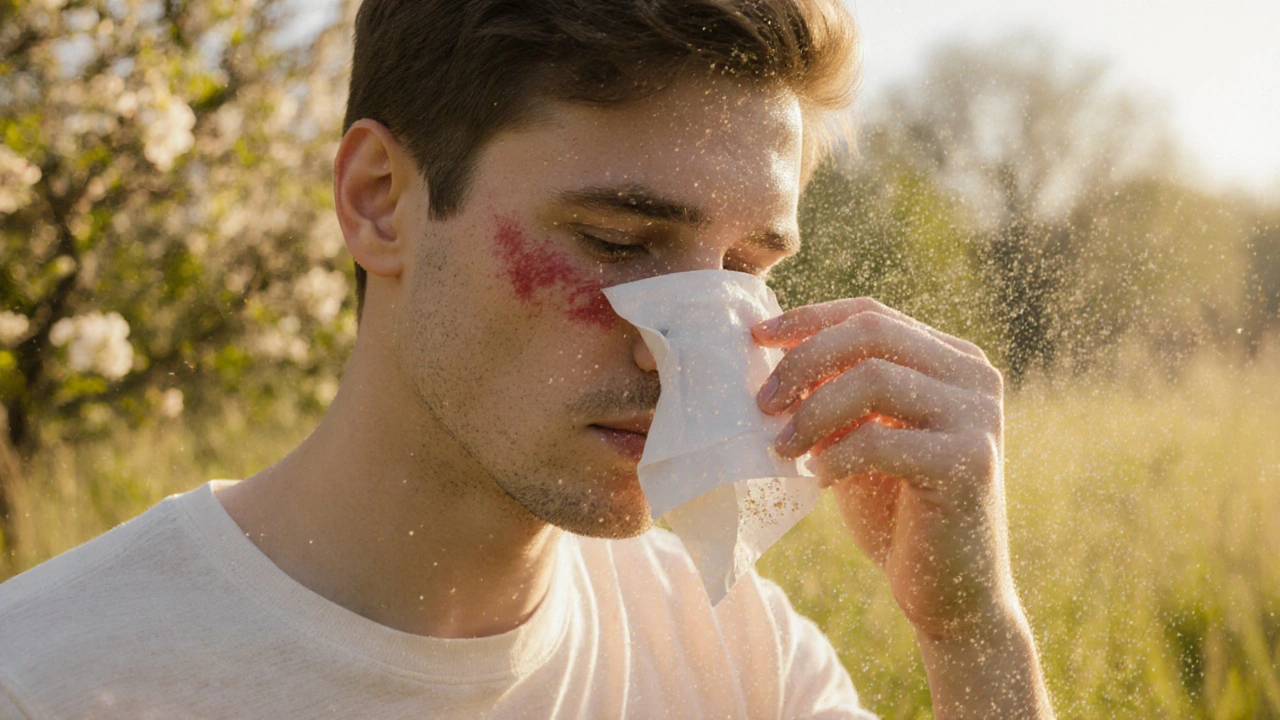Allergic Conjunctivitis: Symptoms, Causes, and Treatment Options
When dealing with Allergic Conjunctivitis, a common inflammation of the eye’s surface caused by airborne allergens such as pollen, pet dander, or dust mites. Also known as eye allergy, it usually shows up as red, itchy, and watery eyes that make you want to rub them all day. Allergic Conjunctivitis often peaks during certain months when pollen counts rise, but it can flare up any time you’re exposed to a trigger.
One of the main ways to calm the irritation is with Antihistamine Eye Drops, medications that block histamine receptors on the eye surface to stop itching and redness. These drops act fast, usually within minutes, and are safe for most adults and children over a certain age. Another popular class is Mast Cell Stabilizers, agents that prevent mast cells from releasing histamine in the first place, providing longer‑term protection. Combining both types can give immediate relief while also reducing future flare‑ups.
Seasonal changes play a big role, especially during Allergy Season, the period when pollen counts are highest, typically spring and early fall in many regions. During these months, keeping windows closed, using air filters, and wearing sunglasses outdoors can cut down the amount of allergen that reaches your eyes. People who live with pets often notice symptoms when animals shed, so regular grooming and vacuuming help keep pet dander at bay.
Key Triggers and Management Strategies
Understanding what sets off your eyes is half the battle. Common culprits include tree pollen, grass pollen, ragweed, mold spores, and even certain cosmetics. If you suspect a specific trigger, try a short elimination period—skip the suspected allergen for a week and watch how your eyes respond. Keeping a simple diary of symptoms, location, and activities can reveal patterns you didn’t notice before.
Beyond drops, lifestyle tweaks make a difference. Rinsing your eyes with sterile saline after a dusty day washes away particles before they bind to receptors. A cool compress on closed lids eases swelling and offers soothing relief. For people with severe reactions, a short course of oral antihistamines can complement eye drops, but it’s best to discuss dosage with a healthcare professional.
When symptoms linger despite over‑the‑counter options, it’s time to see an eye specialist. They can check for underlying conditions like dry eye syndrome or infections that mimic allergy symptoms. Prescription‑strength eye drops, such as those containing steroidal anti‑inflammatories, may be needed for short periods to break a stubborn flare‑up.
In summary, allergic conjunctivitis is a manageable condition once you know the triggers, have the right drops on hand, and apply practical daily habits. Below you’ll find a curated list of articles that dive deeper into each of these topics—whether you need buying guides for eye‑drop brands, step‑by‑step allergy‑season prep, or detailed comparisons of mast cell stabilizers versus antihistamines. Explore the resources to find the exact advice that fits your situation and start easing those itchy, red eyes today.

Seasonal Allergies and Their Effect on Allergic Conjunctivitis Rates
Explore how seasonal pollen spikes raise allergic conjunctivitis rates, learn to diagnose, treat and prevent eye allergy flare‑ups, and see practical tips for patients and clinicians.
Continue Reading



